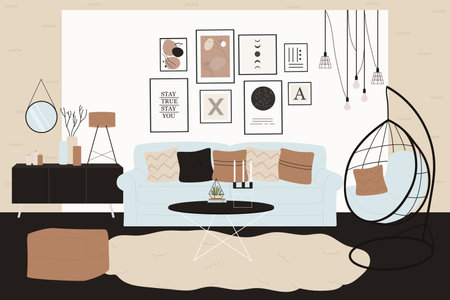Understanding Classic British Interior Style
Classic British interiors are renowned for their timeless elegance, layered textures, and subtle sense of grandeur. At the heart of this aesthetic lies a respect for period architecture—think Georgian symmetry, Victorian ornamentation, and Edwardian refinement. Key features include intricate cornicing, deep skirting boards, original fireplaces, and sash windows that frame leafy views. Iconic details such as panelled doors, dado rails, and ornate ceiling roses further anchor these spaces in tradition. The colour palette is typically understated but sophisticated, with an emphasis on heritage hues that complement architectural features rather than overshadow them. When choosing paint colours for accent walls in classic British homes, it’s essential to consider how these historical elements interact with your chosen shade. The goal is to enhance the room’s natural character—whether through rich jewel tones that echo period opulence or muted earth shades that create a calm backdrop for antique furnishings. Understanding the interplay between architectural detail and colour selection will help you achieve an accent wall that feels both striking and authentically British.
2. The Role of Accent Walls in Heritage Spaces
Accent walls have become a sophisticated tool for enhancing the character and depth of classic British interiors, especially within heritage properties that brim with period features. In historic homes—whether they are elegant Georgian townhouses, charming Victorian terraces, or quaint Edwardian cottages—accent walls offer an opportunity to celebrate architectural details while introducing a contemporary flair. Rather than overwhelming the space, a carefully chosen accent wall acts as a visual anchor, drawing attention to original mouldings, ornate fireplaces, or intricate cornices that define the room’s history.
In traditional British interiors, colour has long been used to set the mood and emphasise proportions. Accent walls continue this legacy by adding dimension and contrast without detracting from the timeless beauty of wood panelling or sash windows. When thoughtfully applied, an accent wall can:
| Purpose | Impact on Heritage Interiors |
|---|---|
| Highlight Period Features | Draws the eye to original details such as ceiling roses, mantelpieces, or bay windows. |
| Add Depth & Warmth | Introduces layers of colour that complement rich textures like wainscoting or exposed brick. |
| Create Focal Points | Defines spaces within larger rooms, perfect for reading nooks or dining alcoves. |
| Balance Old & New | Marries contemporary trends with historical charm for a refreshed yet respectful update. |
By selecting paint colours that resonate with the home’s era—think deep olive greens inspired by Arts & Crafts sensibilities or muted blues reminiscent of Regency parlours—homeowners can subtly reinforce the building’s story. Accent walls thus become more than just a decorative feature; they are a bridge between past and present, allowing British heritage spaces to evolve gracefully while retaining their unmistakable sense of place.

3. Selecting Timeless Colour Palettes
When curating accent wall colours for classic British interiors, it is essential to draw inspiration from the nation’s rich design heritage. Quintessential British colour schemes are rooted in tradition yet remain timeless—perfectly complementing period décors from Georgian townhouses to Victorian terraces and Edwardian villas. Consider muted pastels such as powdery blues, sage greens, and soft blush pinks. These shades evoke a sense of understated elegance, lending warmth and light without overwhelming the historic character of the space.
For those seeking a more dramatic statement, rich jewel tones like deep emerald, sapphire blue, or garnet red provide depth and sophistication reminiscent of stately homes and grand drawing rooms. These hues work beautifully with ornate mouldings, gilded frames, and antique wood furnishings often found in traditional British settings.
If you prefer an earthy, organic feel, nature-inspired neutrals—think stony greys, putty taupes, and olive greens—bring a sense of harmony and calm while echoing the serene British countryside. When choosing your palette, consider the age and architectural details of your home; aim to select hues that harmonise with original features such as cornicing, fireplaces, and panelled doors. Opt for paints with a subtle matte finish to maintain authenticity and let your accent wall enhance rather than overshadow the room’s classic charm.
4. Considering Light and Space in British Homes
When selecting paint colours for accent walls in classic British interiors, it’s essential to take into account the unique architectural features of UK homes. Many British properties—whether Victorian terraces, Edwardian semis, or Georgian townhouses—have specific characteristics such as sash windows, high ceilings, and sometimes modest room sizes. The interplay between natural light, window size, and the overall proportions of each space should be a guiding factor in your colour choice.
Natural Light: North vs South-Facing Rooms
| Room Orientation | Typical Light Quality | Recommended Colour Tones |
|---|---|---|
| North-facing | Cooler, diffused light (often appears greyish) |
Warm neutrals, soft blushes, gentle yellows to counteract chilliness |
| South-facing | Warm, bright light (sunlight throughout the day) |
Cool blues, greens, or even rich jewel tones to balance warmth |
Window Size and Proportion Matters
The classic British home often features smaller or uniquely shaped windows. In rooms with limited glazing, lighter shades can help maximise brightness and create an airy feel. For grander rooms with generous bay windows or French doors, deeper hues can add drama without overwhelming the space.
Tips for Working With Room Proportions:
- Narrow Hallways: Opt for lighter shades on accent walls to avoid a cramped effect.
- High Ceilings: Consider painting one wall in a darker shade to create intimacy and visual interest.
- Box Rooms or Studies: Soft pastel feature walls can make small spaces appear larger and more inviting.
The Subtlety of British Daylight
The often overcast skies of the UK mean that daylight tends to be softer and less direct. This subtle lighting brings out undertones in paint colours that might go unnoticed elsewhere. Always test your chosen hues at different times of day, observing how morning mist or afternoon sun alters their appearance. Ultimately, by embracing the interplay between natural light, window size, and spatial proportions typical of British interiors, you’ll achieve a harmonious accent wall that feels both authentic and elegant.
5. Harmonising with British Architectural Features
When choosing paint colours for accent walls in classic British interiors, it’s essential to consider the unique architectural elements that define these spaces. Britain’s period homes often feature distinctive characteristics such as dado rails, ornate cornicing, statement fireplaces, and elegant bay windows. To create a cohesive look, your chosen accent colour should both highlight and harmonise with these beloved details.
Dado Rails
Dado rails, a classic feature in Georgian and Victorian homes, offer an opportunity to play with contrasting or complementary hues. Consider painting the wall beneath the dado rail in a deeper or richer shade than the upper portion for a sophisticated and historically sensitive effect. If your accent wall includes a dado rail, choose a colour that either grounds the space or draws subtle attention without overwhelming the detail.
Cornicing
Ornate plasterwork and cornices are hallmarks of traditional British interiors. These features are best highlighted by selecting accent colours that enhance their crisp white or off-white finish. Deep heritage tones—such as forest green, navy blue, or oxblood red—can provide a striking backdrop that makes cornicing pop while still respecting the room’s period character.
Fireplaces
The fireplace is often the heart of a British sitting room. If your accent wall frames a mantelpiece, choose a paint colour that complements the material—be it marble, wood, or cast iron. Soft neutrals or muted jewel tones can add depth without competing with the fireplace’s own architectural gravitas. For a bolder statement, pair a dramatic hue with metallic or tiled detailing to celebrate both old and new elements.
Bay Windows
Bay windows flood rooms with natural light and create inviting alcoves. To enhance these nooks, select accent wall colours that reflect light beautifully without detracting from the window’s shape. Lighter shades can amplify daylight and maintain an airy feel, while more saturated tones on adjacent walls can frame the bay elegantly—perfect for showcasing period sash windows or leaded glass.
Final Tips for Coordination
Always test paint samples against your home’s original features in natural daylight before committing to a full wall. By thoughtfully coordinating your accent wall colour with cherished British architectural details, you’ll achieve an interior that feels both timelessly elegant and distinctly personal.
6. Tips for Testing and Sampling Paints in the UK Climate
Choosing the perfect paint colour for an accent wall in a classic British interior goes beyond browsing swatches—it requires a careful approach to sampling, particularly given the UK’s distinctive climate and lighting. To make an informed decision, always test potential shades on your actual walls rather than relying solely on colour cards. Paint large sample patches on different areas of the intended wall, ideally at least A4 size, so you can observe how each hue interacts with the room’s mouldings, panelling, and period features.
Britain’s frequently overcast skies and shifting seasonal daylight can dramatically affect how colours are perceived. Observe your samples at different times of day: morning light tends to be cool and blue-tinged, while afternoon sun (when available) brings out warmer undertones. Don’t forget to check under artificial lighting too—traditional chandeliers or sconces emit a much softer glow compared to modern LEDs, which may alter the paint’s character.
Humidity and temperature changes common in British homes, especially older properties with less insulation, can influence both paint application and drying time. Allow sample patches to fully cure before making your choice; this will give you a true sense of the final finish. If possible, live with your samples for several days to see how they interact with soft furnishings, artwork, and architectural details as weather conditions change.
For heritage homes, consider paints formulated for breathability—many British brands offer lines specifically designed for lime plaster or period interiors. These paints often respond differently to light and moisture than standard emulsions. Ask your local supplier about finishes that enhance natural textures while standing up to fluctuating indoor climates.
Finally, always note that paint colours tend to appear darker once applied over a larger area and in low-light settings typical of many UK homes. Opting for a slightly lighter tone than your initial preference can help maintain brightness without sacrificing depth or historical authenticity.


